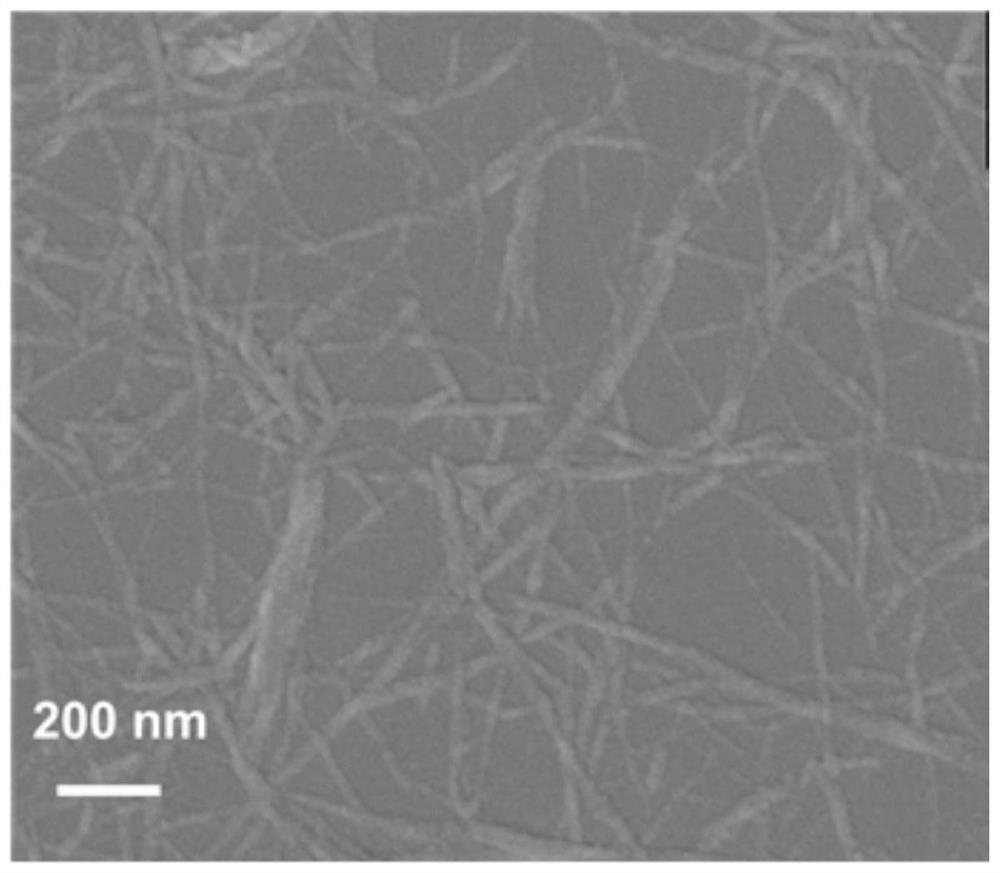Plant-based cellulose nanofibril as well as preparation method and application thereof
A nanofibril and cellulose technology, which is applied in the post-processing of cellulose pulp, fiber raw material processing, pulp beating method, etc., can solve the problems of staying in the laboratory research stage, less large-scale production, and large energy consumption. The effect of promoting dissociation and miniaturization, promoting fibrillation, and improving efficiency
- Summary
- Abstract
- Description
- Claims
- Application Information
AI Technical Summary
Problems solved by technology
Method used
Image
Examples
Embodiment 1
[0038] A method for preparing plant-based cellulose nanofibrils of the present embodiment, the specific preparation steps are as follows:
[0039] (1) Ball milling treatment: the bleaching chemical thermomechanical slurry is configured into a mixed solution with a concentration of 1.0% (w / w), and 160 g of the mixed slurry quality is poured into a 500 mL ball milling tank, and a large ball (diameter: 10 mm ) and small balls (diameter: 6mm), wherein the mass ratio of large balls to small balls is 3:2. And control the mass ratio of mixing balls and slurry dry to 30:1. During the ball milling process, the rotating speed of the ball mill was set to 400rpm. In order to avoid overheating of the slurry, the ball milling was set for 5 minutes, and the suspension was 5 minutes as a cycle. The ball milling time was 0.5h to obtain the ball milled slurry.
[0040] (2) High-speed shearing treatment: the slurry after the ball milling treatment obtained in step (1) is configured into a suspe...
Embodiment 2
[0044] A method for preparing plant-based cellulose nanofibrils of the present embodiment, the specific preparation steps are as follows:
[0045] (1) Ball milling treatment: the bleaching chemical thermomechanical slurry is configured into a mixed solution with a concentration of 1.5% (w / w), and 180 g of the mixed slurry quality is poured into a 500 mL ball milling tank, and a large ball (diameter: 10 mm ) and small balls (diameter: 6mm), wherein the mass ratio of large balls to small balls is 4:2. And control the mass ratio of mixing balls and slurry dry to 35:1. During the ball milling process, the rotating speed of the ball mill was set to 400rpm. In order to avoid overheating of the slurry, the ball milling was set for 7 minutes, and a cycle of 7 minutes was suspended. The ball milling time was 1 hour to obtain the ball milled slurry.
[0046] (2) High-speed shearing treatment: the slurry after the ball milling treatment obtained in step (1) is configured into a suspensi...
Embodiment 3
[0050] A method for preparing plant-based cellulose nanofibrils of the present embodiment, the specific preparation steps are as follows:
[0051] (1) Ball milling treatment: the bleaching chemical thermomechanical slurry is configured into a mixed solution with a concentration of 2.0% (w / w), and 200 g of the mixed slurry quality is poured into a 500 mL ball milling tank, and a large ball (diameter: 10 mm ) and small balls (diameter: 6mm), wherein the mass ratio of large balls to small balls is 5:2. And control the mass ratio of mixing balls and slurry dry to 35:1. During the ball milling process, the rotating speed of the ball mill was set at 500rpm. In order to avoid overheating of the slurry, the ball milling was set for 8 minutes, and a cycle of pausing for 8 minutes was used. The ball milling time was 1.5 hours to obtain the ball milled slurry.
[0052] (2) High-speed shearing treatment: the slurry after the ball milling treatment obtained in step (1) is configured into ...
PUM
| Property | Measurement | Unit |
|---|---|---|
| diameter | aaaaa | aaaaa |
| length | aaaaa | aaaaa |
| diameter | aaaaa | aaaaa |
Abstract
Description
Claims
Application Information
 Login to View More
Login to View More - R&D
- Intellectual Property
- Life Sciences
- Materials
- Tech Scout
- Unparalleled Data Quality
- Higher Quality Content
- 60% Fewer Hallucinations
Browse by: Latest US Patents, China's latest patents, Technical Efficacy Thesaurus, Application Domain, Technology Topic, Popular Technical Reports.
© 2025 PatSnap. All rights reserved.Legal|Privacy policy|Modern Slavery Act Transparency Statement|Sitemap|About US| Contact US: help@patsnap.com

